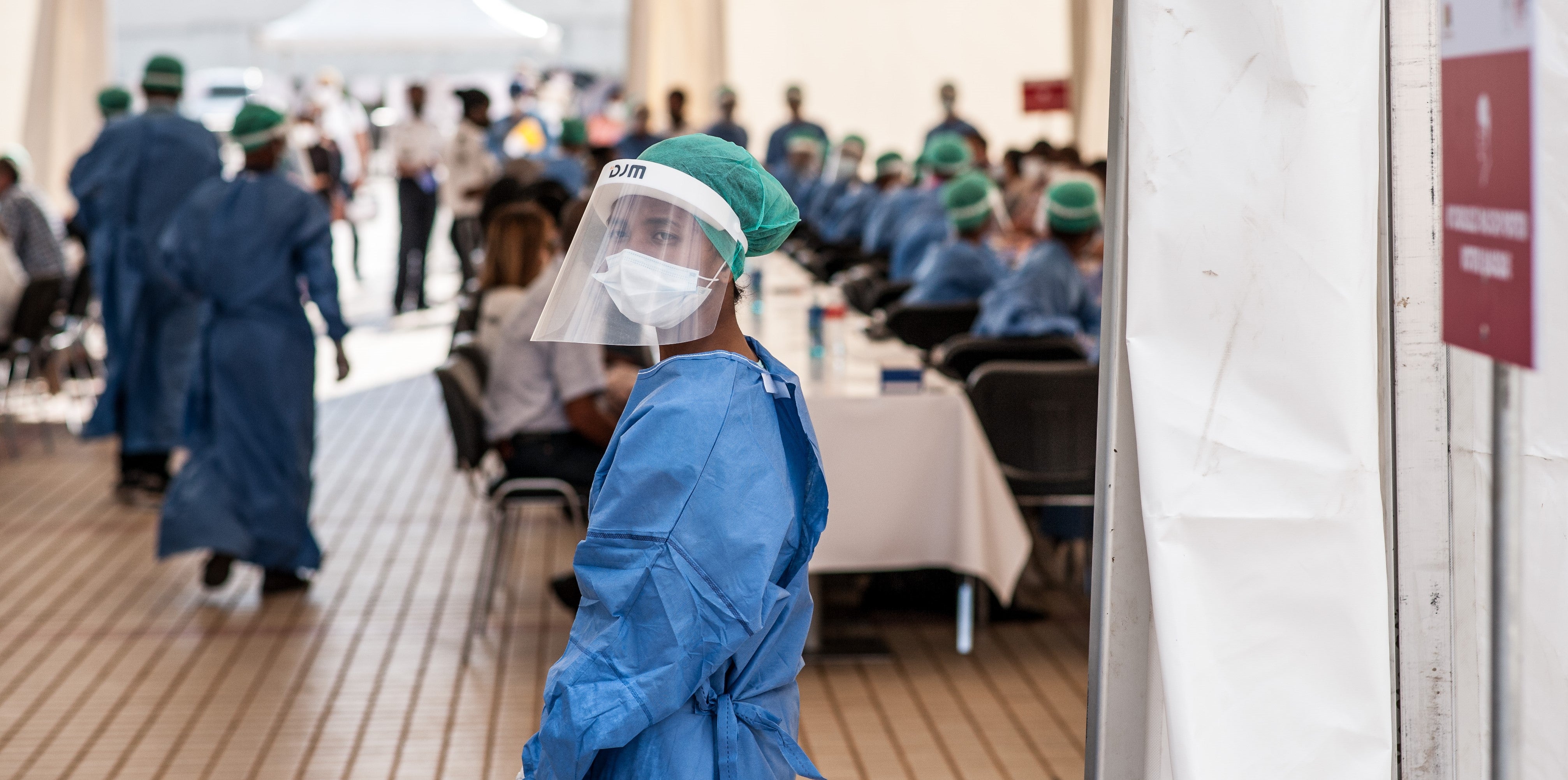 COVID-19 testing
COVID-19 testing
Amidst uncertainty surrounding the outlook for COVID-19 fatalities and infections, developing and deploying a vaccine is the topmost global priority. Health and logistics systems under stress will be challenged for the global distribution of a new vaccine, when and if it becomes available. If the protocols for handling such a vaccine resemble those for existing ones, it will need to be supported by strong and sustainable cold chains. This poses a daunting development challenge.
Healthcare programs have made great progress in developing countries since the World Bank’s first health project to fight river blindness in West Africa in the 1970s, and vaccines have become an integral part of healthcare around the world. Yet, one in five children worldwide still lack access to even the most basic vaccines, causing 1.5 million preventable deaths every year. The WHO estimates that, among the 19.4 million infants who were not reached by routine immunizations in 2018, most were in rural areas with weak medical supply chains. One major cause is the lack of uninterrupted cold chains, from the point of vaccine production to the patients.
One of the main problems associated with weaker vaccine cold chains is often the lack of reliable electricity supply. Despite the critical role energy plays in enabling health services, many facilities in rural developing environments still suffer from energy poverty. In sub-Saharan Africa, only 28% of healthcare facilities enjoy reliable electricity supply.
In order to counter global pandemics like COVID-19, even remote and sparsely populated areas require access to vaccines. Delivering a new vaccine will further strain limited cold chain capacities in low-income countries. There will be a sizeable increase in energy demand from additional cooling volumes for stationary refrigeration in distribution hubs, health facilities, and storage facilities. In addition, the amount of cooling required in refrigerated vehicles to transport these vaccines will grow significantly.
Capabilities to meet such demand are often based on unreliable fossil fuel-centric electricity grids, and expensive diesel-powered generators and trucks. While existing grids and diesel generators may address the most urgent loads, they can be complemented with cost-effective solutions to improve affordability and reliability, mitigate fuel supply risks, and reduce harmful emissions. Solar-plus-storage units can boost electricity reliability at grid-connected hospitals, complement diesel generators to create affordable hybrid systems at off-grid sites, and provide reliable stand-alone generation at rural locations. In addition to medical cooling, reliable electricity supply can power critical medical equipment such as ventilators and oxygen concentrators as well as local producers of masks and personal protective equipment (PPE).
Solutions on the demand side can also reduce energy usage through energy efficient cooling and refrigeration technologies with better insulation, off-grid direct current (DC) based refrigerators, solar cooling, or solar direct drive vaccine refrigerators that “store the cold” without batteries. Improving energy efficiency and reducing operating costs frees up scarce local resources to maximize testing and the provision of care. As the need for refrigeration expands, it is also an opportunity to replace conventional refrigerants—based on greenhouse gases with high global warming potential—and transition to more climate-friendly refrigerants across the stationary and mobile vaccine cold chain.
We need a global effort to establish and sustain medical supply chains to deliver a COVID-19 vaccine when it becomes available. This urgent requirement can also provide an opportunity to address cold chain reliability for future health needs, provide energy access to critical services, mainstream energy efficient and solar-based technologies, and lay the ground for a sustainable economic recovery after the immediate crisis has passed. Systems-based thinking and an integrated approach can help to adequately meet the post-COVID-19 health recovery needs while, at the same time, supporting efforts to address the climate challenge and provide sustainable economic growth.
The World Bank is acting upon this challenge. A multi-sectoral technical assistance program, the ESMAP Efficient, Clean Cooling Program, was established in 2019 to accelerate the uptake of sustainable cooling solution, including refrigeration and cold chain in developing countries. In parallel, efforts are underway to mobilize donor funds to support governments—mostly in Sub-Saharan Africa—to respond to COVID-19 by rapidly electrifying health facilities with distributed solar PV/battery solution, including the provision of off-grid solar products and associated solar refrigeration to safely chill vaccines all the way to village clinics.
Now is the time to recognize energy’s vital role as an enabler of health care delivery, and to strengthen the nexus between development objectives for clean energy (SDG 7) and health (SDG 3).
Subscribe here to stay up to date with the latest Energy blogs.


Join the Conversation